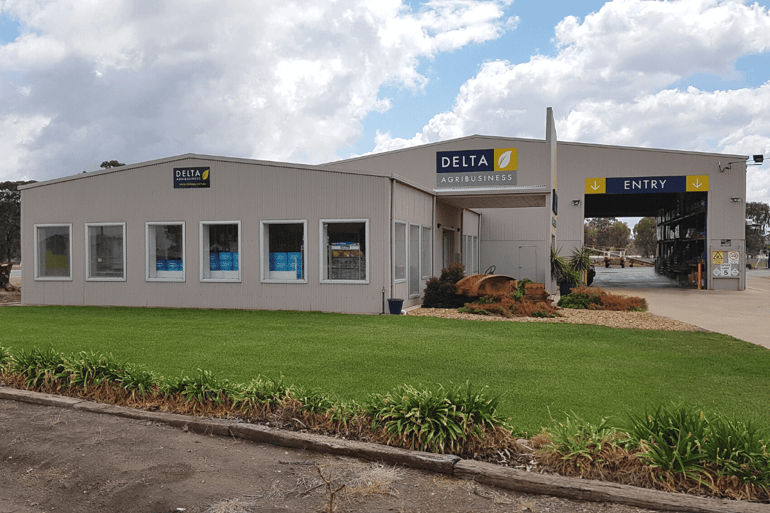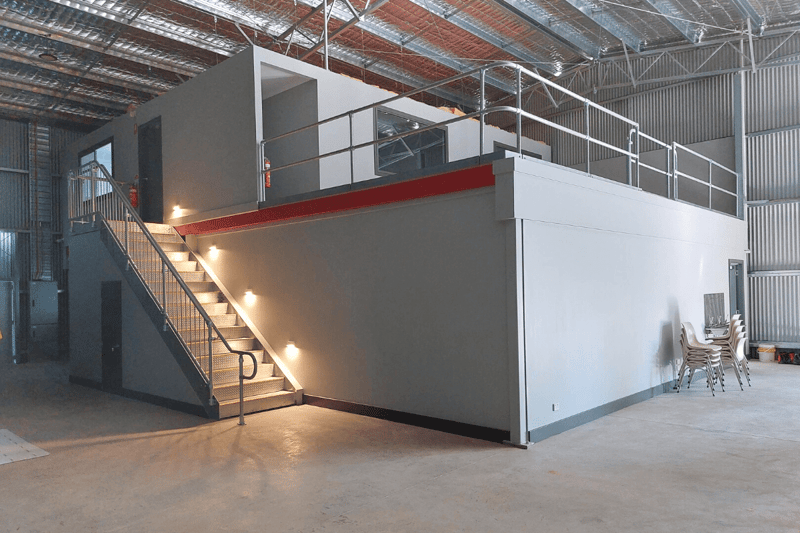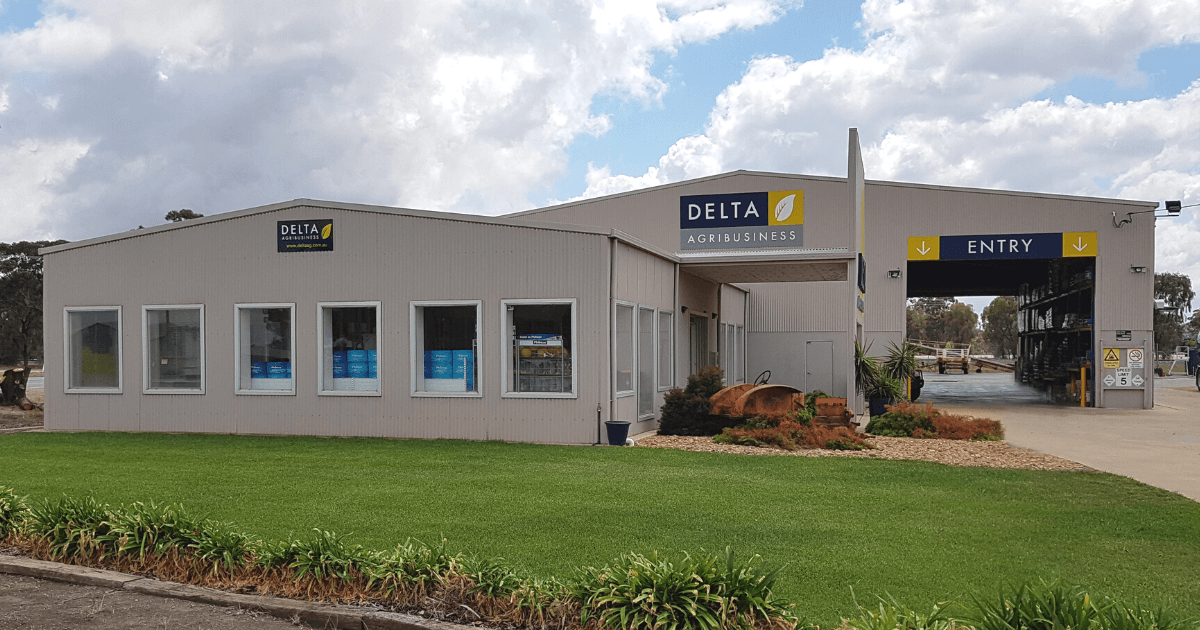How much does an industrial shed cost?

If you’re planning to build an industrial shed, the construction cost is likely a critical factor in your decision.
From the size of the shed to the location, many variables can affect the overall cost of your industrial building. However, understanding the average cost per square metre can provide a good indication of what to expect. In this article, we explore the various factors that influence the price of an industrial shed and we provide insights into the average cost of different shed sizes in Australia.
The cost of an industrial shed (per m²)
A steel shed is a practical and versatile solution for any purpose, from warehousing to storing aircraft. As a starting point, the cost of an industrial shed is typically between $400 and $500 per square metre, depending on its specifications.
This price range gives an indication of the cost of a basic industrial shed. However, if you require a shed with additional features, engineering, or specialised materials, the price is likely to be higher. It may seem like a big upfront cost, to begin with, but the investment in a quality structural steel shed will pay off in the long run.
Factors that impact the price
The price of an industrial shed will vary depending on various factors, including location, size, purpose, materials, and engineering design. In this section, we discuss each of the key factors in more detail.
Purpose
The purpose of an industrial shed can significantly impact its price for several reasons.
Firstly, the purpose of the shed may require specific features, materials, or equipment which can increase the cost of construction. For example, a shed designed for storing hazardous materials may need to have additional safety features like ventilation systems, fire suppression equipment, and specialised flooring.
Secondly, the intended use of the shed can impact the design and engineering of the structure. A shed that requires heavy machinery or equipment may need to be reinforced or built to specific dimensions, which can drive up the cost.
Size
The size and shape of an industrial shed can significantly affect its price, including height, span, bay spacing, and square meterage. Generally, larger sheds require more materials and labour, resulting in greater construction costs.
Moreover, the shape of the shed can impact its functionality, accessibility, and even aesthetic appeal. A non-standard shape or design may require additional engineering and construction time, which can increase the overall price.
Location
The cost of building an industrial shed can be impacted by various location-related factors such as site conditions, distance from suppliers, and council restrictions. Site conditions such as rocky or hilly terrain can make it challenging to build, increasing the cost of construction. Similarly, distance from suppliers can also add to the cost, especially when materials and tradespeople have to be transported to the location.
Council restrictions can also impact the cost, as certain areas may have specific regulations that require more expensive materials or additional features. For example, building an industrial shed to house aircraft in an area with aircraft regulations may require more costly, non-reflective building materials than cheaper options.
Materials
The quality of the materials used to build your shed will affect the durability, appearance, and overall functionality, as well as the construction cost. High-quality materials typically cost more but can also improve the shed’s longevity and reduce ongoing maintenance.
Steel is a popular material for building industrial sheds due to its strength and durability. Galvanised steel is also commonly used as it is rust-resistant and requires minimal maintenance. Timber can also be used in some applications but it may require more upkeep to maintain its condition over time.
Engineering
The engineering of your shed ensures that it can withstand the environmental and operational requirements of its intended use. The more engineering is required, the higher the overall cost of construction.
Bay spacing
Bay spacing refers to the distance between the supporting columns, which can impact functionality and ease of movement inside the shed. Wider bay spacing may require additional support structures which can increase the cost.
Shed span
The span refers to the overall width of the shed building. Typically, a wider span will require stronger materials and supports to hold the structure’s weight, which will drive up the cost of construction.
Height
The height of the shed is another crucial consideration as it affects storage capacity and ease of movement inside the shed. A higher shed may require additional reinforcement, especially when supporting roller doors, a gantry crane, or other additional features.
Additional features

If you wish to add certain features to your shed design, you can expect the total price to increase. These features may include:
Office fit-outs
Although a built-in office offers advantages in terms of convenience, cost-effectiveness, and productivity, it's vital to recognise that it will increase the cost of your shed due to the need for additional internal walls and a personal access door.
Mezzanines
For practical storage space, you might consider adding a mezzanine floor to your new shed. However, this will increase the overall cost because extra structural support is required to hold the additional weight.
Gantry cranes
A gantry crane can be a practical addition to an industrial shed, especially for heavy fabrication applications and moving heavy loads. However, the shed will need to be engineered to support this, with extra structural support added to the sides of the shed.
Roller doors
If you need easy access to the shed for big machinery and vehicles a roller door is a practical solution. These are considered additional features because extra framing is required to support the door’s weight.
Firewalls
A firewall can help to contain fires on the property and minimise the risk of them spreading to neighbouring buildings. However, it's worth noting that installing a firewall will increase the cost of construction since it involves building an additional wall in your shed.
Sprinklers
Sprinklers will also reduce the fire threat to your employees, products, and equipment. The installation cost varies depending on the size of the building, however, it is wise to do this during the initial building phase because adding them later will be more expensive.
Air conditioning and ventilation systems
Installing an air conditioning system will improve working conditions, equipment performance, and product quality. It is more cost-effective to incorporate this early in the build but it will add to the initial shed price.
Security fixtures
To protect your business’ assets from theft, you may wish to incorporate security features like reinforced doors, access control systems, surveillance cameras, alarm systems, and security lighting. These features will increase the cost of your shed but ultimately pay off in the long run.
Specific lighting
If you require particular lighting configurations, the additional wiring and fixtures will increase the cost of your shed. However, if the lights improve your operations and visibility, it will be worth the investment.
At ABC Sheds, we offer free, no-obligation quotes for all of the sheds in our range. Simply ask us for an accurate quote tailored to your specific project. To plan your new shed, simply download our free brochure showcasing our full range of industrial sheds below.
-1.png?width=3641&height=660&name=abcshedstransparent2%20(1)-1.png)




